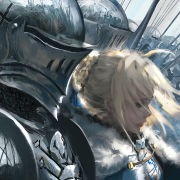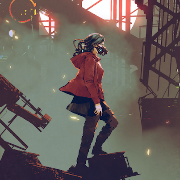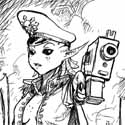|
Of course, everyone really knows the Orlanthi from King of Dragon Pass. Epic fantasy is fantasy about cows.
|
|
|
|

|
| # ? Apr 18, 2024 23:10 |
|
 Chapter 2: Welcome to the Hoffmann Institute Part 2 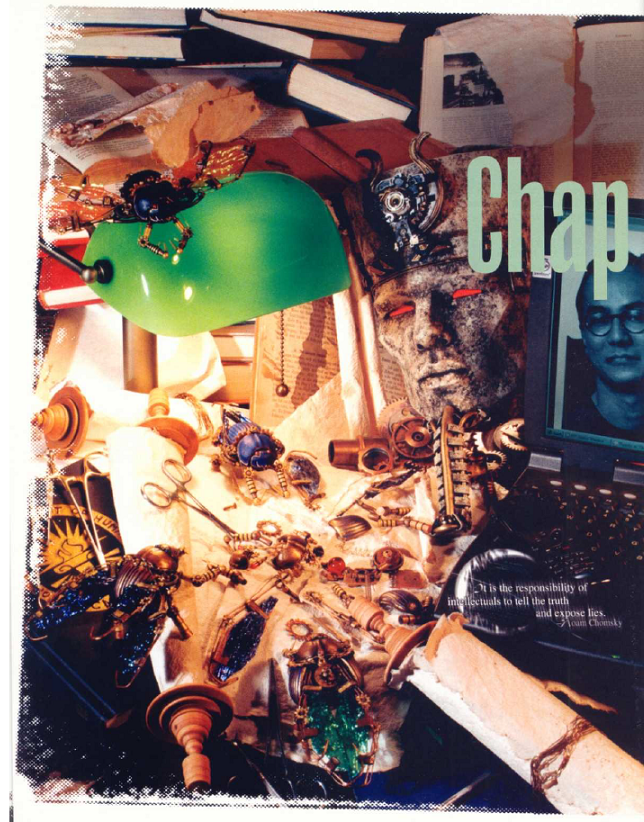 Okay I lied, it turns out the internal division listings for the Hoffman Institute are a lot more information dense than I remember, and I don't want to run this into Chapter 3 (which is its own kind of info-dense beast). So, let's knock this out tonight! HI has five primary divisions, each responsible for a different aspect of HI's overall goals. The divisions are: Administrative, Analytical, Archives, Intelligence, and Special. Most divisions have a presence in each of HI's branch offices, although this presence can sometimes be just a single agent at some of the smaller facilities. Each division is centered in a different city or compound, and many divisions are further divided into smaller departments. Director Itohiro Nakami leads the Administrative Council, a group of HI executives responsible for setting and reviewing the primary goals for HI, as well as keeping said goals away from public scrutiny. The other members of this council are the five Division Supervisors (the highest rank within a given division), the multiple Department Chiefs within the Administrative division, and any additional Facility Directors that might have control of particularly sensitive or crucial intelligence within their compounds. Administrative Division Division Supervisor: Gail Morland Gail is the most senior HI agent, outranked only by Director Nakami. Because of her position of seniority and her role as division supervisor of administration, there's not much information that slips by her notice. She doesn't necessarily know all of the specific details of every operation as they occur, but you can infer a lot of critical information just by auditing an agent's expense records and equipment requisition checklist. This is the division that makes HI policy, assigns agents to specific tasks, and authorizes the use of force when it becomes necessary to the completion of a mission. More frequently, however, this division includes the bean counters and support resources that make sure HI stays under budget and on target. Administrative Division departments include Facilities & Accounts, Legal, Personnel, Security, and Training. The book is pretty direct that the Administrative Division isn't the best base of operations for the kinds of adventures that the average HI agent is expected to undertake, but if you have a player that really wants to play a fish-out-of-water getting thrown into action because of an internal miscommunication, go hog wild. In general, Administrative Division does not retain a stable of field agents, and they are almost never involved in direct operational capacity. This has also created an unfortunate rift between the Administrative Division and the Intelligence division, as the latter group tends to involve the majority of HI's active field operations, and agents that risk their lives day in and day out have become understandably tired of having to justify why (for example) an AR-15, 3 boxes of ammunition, and two incendiary grenades was necessary to complete their operation when they were already provided a standard issue 9mm with a single spare clip. Analytical Division Division Supervisor: Thomas "Too Tall" Curran Too Tall was a former chief medical examiner for the city of Dallas until he ended up unknowingly performing autopsies on xenoforms that only superficially resembled human beings. He still affects a southern accent and puts on a "been there, seen it all" attitude that serves to counterbalance his gaggle of excitable but easily distracted subordinates. The brains of HI, this division is half research methodology and half applied engineering, with a big 'ol helping of nerd mixed in for flavor. Analytical Division departments include Ballistics, Biological & Chemical, Computer Resources, and Engineering & Fabrication. Almost every agent in this division possesses some extremely specific technical expertise or scientific skills, and they are often expected to be able to bring their knowledge into the field to assist other agents in identifying or resolving supernatural phenomena. One of Alternity's character classes is the Tech-Op, and the book recommends that any players wanting to run a Tech-Op hero should start in the Analytical Division. Archives Division Division Supervisor: Gheorghe Zamfirescu Gheorghe oversees all of the data, research reporting, patents, and classified information produced by HI. Although field agents flippantly refer to the Archives Division as "the clerks" and refer to Gheorghe as "the Head Librarian", agents quickly learn that saying either of those things within earshot of Archives personnel is a great way to get all of your system access revoked and all of your digital devices recalled for "maintenance" . Archives Division oversees a wide-ranging collection of human and alien artifacts, occult tomes, and xenobiological specimen samples, widely scattered across multiple HI sites; this is an intentional policy to enhance division security and ensure that a breach at any one Archives Division compound doesn't risk compromising the entire institute. The Archives Division departments include the Department of Antiquities and the Department of Documentation. Four of the most important Archives Division branches are the Case Report Server (containing redundant digital copies of all HI case files), the New York Rare Book Depository (the Ry'leh Fragments, a copy of the stage play "The King in Yellow", etc.), the Chicago Specimen Collection (primary repository of the institute's xenobiological specimens), and the Barcelona Antiquities Office (archaeological finds like the Ark of the Covenant). Despite the negative connotations that many field agents ascribe to the Archives Division, it's not at all uncommon for Archives Division agents to perform on-site work for active operations. If your character concept includes someone like Indiana Jones or Lara Croft, the Analytical Division makes a great base of operations. Intelligence Division Division Supervisor: Samuel Layacona Sam operates the Intelligence Division out of Washinton D.C. where the division has multiple opportunities to work with, and recruit from, agencies such as the CIA, DoD, FBI, and NSA. Sam actually started as an agent for the NSA under the Carter Administration, and although he has long since ceased working for the U.S. government, he has maintained an extremely "scratch my back and I'll scratch yours" relationship with his previous colleagues. The Intelligence Division departments include Directorate, Image Acquisition, Observation, and Information Retrieval. These departments cover all of the standard cloak and dagger activities that comprise the deadly ballet of international espionage. The Directorate department itself is shrouded in secrecy; other agents claim that it consists of 12 spooks that aren't listed anywhere within the HI employee hierarchy, that they operate from a secured compound somewhere in Scotland, and that they keep tabs and files on both HI's enemies and HI's agents. When an HI agent goes AWOL or rogue or worse, the Directorate is the department that's responsible for cleaning up the mess. Thus far, nobody that has ever turned traitor against HI has permanently avoided capture or execution by the Directorate. Special Division Division Supervisor: Unacknowledged The Special Division is to the Directorate what the Directorate is to the rest of the institute. HI makes no effort to publicize the existence of Special Division; HI officers and supervisors don't acknowledge it, and its members never appear on an organizational chart, phone list, or employee database. In fact, most Special Division agents are hidden in plain sight, holding otherwise unremarkable positions within other HI divisions, but following an invisible chain of command of which only they are aware. Still, stories of Special Division activities regularly make the rounds among the rest of the HI staff. If even half of the rumors are true, the Special Division is a hotbed of paranormal activity, supernatural encounters, and xenobiological monstrosities. Everyone "knows" that the Special Division is home to the HI stable of honest-to-god psychics, engages in black ops and wet work assassinations, and has possession of the sole operational, intergalactic vehicle that Special Division remanded from a wayward alien scouting party. If any of the regular HI staff were told what actually happens within the Special Division they'd say such lies are too outlandish even for the average weirdness that comes from working at HI. The book promotes the idea that the Special Division is the "epic level" version of a Dark*Matter campaign. When your players have saved the world from the brink of annihilation, that's when they get an invitation to the Special Division to learn what's really going on. With that, we're finally done with Chapter 2! The next chapter is a lot more dry; it's the skill list and feat list and career list for Dark*Matter heroes. Rather than cover all of the mechanical information line-by-line, I'm going to use it to try and explain what I perceive to be one of the major shortcomings of the Alternity system.
|
|
|
|
I was amused to learn that in the new Blood Bowl computer game, Bretonnia finally gets a team. Centered around knights, of course. Wonder which Virtues apply to knights playing Blood Bowl and whether becoming a star player would be qualification for the Lady to appear to a questing knight.
|
|
|
|
Absolutely. The Lady has Blood Bowl parties every week during the season.
|
|
|
|
I need to see the Lady of the Lake in a beer helmet.
|
|
|
|
They're also getting a Kislev team which are basically just a reskinned Slann team, meaning that they're acrobatic and have a lot of leaping and maneuvering prowess. And a werebear.
|
|
|
|
 Aethera Campaign Setting Part Eighteen - Gear & Magic II Power armor had its genesis in construction and mining equipment, but as designs were refined and miniaturized, specialized versions for commercial and military applications were developed. Today the elite Hierarchy mage-hunters, the Vanguard, use power armor almost to the exclusion of other armor. As might be expected, power armor functions best while powered. The internal capacitor on a suit is located on the back, under a hardened plate, thus can only be recharged by another character or by exiting the armor. The capacitor can be sundered, with hardness 10 and 25 hp, it’s sort of a task. But if you get it down past half health the armor is treated as broken, and destroying the capacitor causes an explosion, dealing 2d6 plasma damage to the occupant and everyone adjacent, allowing a Reflex save for half to the adjacent people. Getting in and out of a suit is a full-round action if the suit is powered, but takes a whole minute for an unpowered suit and you need to pry it open with a Strength check that’s only slightly easier if you’re inside. Unpowered power armor is immobile and an occupant is treated as flat-footed. Regular armor can be worn in power armor, but all its effects are suppressed and armor check penalties for both armor and suit stack.  Suits range from the basic Mk I for 2,000 au up to the 36,000-au Mk IV. A Mk I suit is restricted, while Mk II and up are military-grade. All power armor grants a Strength bonus and doubles the occupant’s carrying capacity, as well as granting anyone except an okanta the powerful build trait. Higher-quality suits also provide a Constitution bonus and increase the Strength bonus. They limit the maximum Dexterity bonus you can apply to AC, just like regular armor. For a Mk I suit, the max Dex bonus is +1, every other one is 0. Fortunately they’re very good armor in their own right, starting at +10 AC for a Mk I and capping out at +16. A quick offhand calculation seems to indicate this is as good or better than a heavy-armor fighter would have at a similar price. Of course, the constant drain on your pocketbook while operating it is a factor, a suit’s capacitor holds a few dozen au and drains in a matter of hours (Larger size but faster drain as you go up tiers), faster if you’ve hooked any accessories up. Suits of power armor have body slots in much the same way characters do, although lower-tier suits have fewer slots (Mk I only has body and head, for instance). These slots can hold power armor accessories, improving or adding functionality, usually at an additional operating cost. The Agile Frame retunes the servos and trims the fat off the suit, increasing mobility and range of motion. It reduces armor check penalty by 3 and increases max Dex bonus by 2. A Mk IV suit with this installed is nearly as agile as an unarmored character. Possibly just as, if you can get masterwork suits. Ammo Storage adds quick-access pouches and containers that hold up to 50 pounds of ammo and let you access it as a swift action. Ballistic Armor Plating is something you install to make sure that nice +10 armor bonus isn’t laughed at by some schlub with a scrap pistol. Comes in two flavors, allowing you to apply half or all your armor bonus to firearm touch attacks. Boost Thrusters are a set of hand and foot jets that add a +2 bonus to jump and reduce falls by 10 feet. In zero-g, they can be used to fly slowly and clumsily. An Emergency Trauma System holds a single potion and automatically injects it into the occupant of the suit when their HP drops below 0. An Environment Seal does exactly what it says on the tin, allowing work in the vacuum of space, underwater, or in noxious gases. The Heavy Weapon Stabilizer gyroscopically cancels out the recoil of automatic weapons, negating the attack roll penalty and allowing stabilized weapons to be fired without needing to be set up first. Like the Trauma System, the Injector System holds potions, two in this case, but puts their application in the hands of the wearer. A power armor Speed Booster adds a toggleable overdrive system, which boosts speed by 20 feet per round, but drains 10 au from the suit’s capacitor each round it’s active. This can be mitigated by installing a Redundant Power Supply, which can add either 25 or 200 au to the suit’s capacity. The 200-au version is naturally quite expensive. And a Toxin Filter just adds some aeronite filters to the suit’s helmet, granting +4 on fort saves versus airborne poisons. The unique properties of aetherite have resulted in great strides in the field of manufacturing, primarily the invention of the crafting station. While these are initially recognizable as automated assembly lines with mechanical arms controlled by punch-card programs, the gravity-nullifying properties of aetherite give these crafting stations a zero-g “assembly field” where components can be placed, moved, held, and manipulated for easy assembly. The basic Crafting Station can be used to create or repair any nonmagical and non-aethertech item, and provides a 50% reduction in crafting time. Then it gets weird, because better-quality crafting stations reduce the crafting time further, but it says “reduces crafting time by 100%” and 200%. These are not valid calculations that can be applied to time. The Aetheric Crafting Station is significantly more sane. These can function as regular crafting stations, reducing crafting time by 25, 50, or 75% for nonmagical items, but are also optimized to create a specific type of magical or aethertech item, such as wands, armor, or staves. But the creme de la creme is the Autonomous Assembly Engine, an AI-driven aetheric crafting station capable of storing spells for use in items and designing or crafting things without input, only needing a stockpile of raw materials. While undeniably useful, it runs into that weird temporal anomaly of reducing the time it takes to craft an item by 100%. I’m reminded of this Murphy’s Rule in the 3E crafting rules where crafting time was based on cost of an item, but clubs and quarterstaves had no cost, so you could walk menacingly towards a tree with a woodcarver’s knife and a smirk, and it would collapse into weaponry. These crafting stations are not exactly cheap. While a Crafting Station Mk I costs less than a good suit of +1 armor, it’s not portable in any decent adventuring sense, being roughly the size of a desk and weighing 500 pounds. Aetheric crafting stations are more expensive, costing tens of thousands of au for a good one, while the autonomous assembly engine costs more than an adventurer could reasonably expect to see in most of their lifetime, especially if they’re attempting to maintain an adventuring lifestyle as well. These are probably best used as background flavor or a boon for befriending a rich industrialist or craftsman. They’re undeniably handy, but crafting characters are hard to use with real effectiveness in most campaigns.  Aetherships are complex, but vital to the setting. There are a lot of new rules that are going to be very hard to summarize here. They’ve done a good job of keeping things from veering entirely into a different system, things are still functioning in a similar manner to regular Pathfinder combat, but an aethership fight is going to involve a bunch of flipping through the book. For instance, aetherships care about facing, because they have fore- and aft-mounted weaponry. Anyone in the cockpit of an aethership can take on a crew role and use their skills to help with a battle. Pilot, Copilot, and Tactical positions all use the Fly skill to fly the ship and provide bonuses, while an Engineer uses Disable Device to shuffle power from one system to another. If you don’t have either of those skills, you can fire the weapons. Plant aetherships function even more differently than normal aetherships. A plant aethership is a living creature that must be mentally interfaced with to fly, rather than just gripping a stick. Erahthi are cool with this, but other races are disoriented for a day, suffering a few penalties to combat skill. Plant aethercraft are usually not as sturdy as traditional ones, but they have fast healing. The aetherdrive sustains a ship if it has power, but a plant aethership with a disabled aetherdrive needs to eat and breathe, and will rapidly freeze in the vacuum of space. Since both types of aethership are creatures, they are technically treated as additional members of a party, but the book cautions against affecting the XP a party gains unless they happen to have an aethership that’s technically more powerful than them. Aetherships have two speeds: An atmospheric speed and a space speed. Atmospheric speed is treated just like a creature with a fly speed and maneuverability, but in the vacuum of space, an aetherdrive can accelerate a ship to incredible speeds, and space speeds are a more abstract number of squares, used mostly to determine relative positions in a space battle. Not all aetherships have both speeds, and a ship that only has a space speed needs to act quickly to avoid crash-landing if it ever… enters a planet’s orbit?  I really don’t think that’s the actual term they want to use. Like, I understand the intent, you can’t fly them in atmosphere, but playing this as written means that space-only ships can never actually exist, because as soon as they come free of the shipyard they start crashing into the planet. Or by a strict definition of “orbit”, they crash into the loving sun any time they’re within the gravitational well of the entire star system. I really don’t think that’s the actual term they want to use. Like, I understand the intent, you can’t fly them in atmosphere, but playing this as written means that space-only ships can never actually exist, because as soon as they come free of the shipyard they start crashing into the planet. Or by a strict definition of “orbit”, they crash into the loving sun any time they’re within the gravitational well of the entire star system.  Aetherships can also essentially run. They have to start at their regular flight speed, spend a few minutes like that, and then they can spend some power to go up to cruising speed, which is three to four times their speed, and after another few minutes at 4x, can spend more au to go up to all-out speed, which starts at 5x speed, topping out at up to 8x speed. Aetherships can also essentially run. They have to start at their regular flight speed, spend a few minutes like that, and then they can spend some power to go up to cruising speed, which is three to four times their speed, and after another few minutes at 4x, can spend more au to go up to all-out speed, which starts at 5x speed, topping out at up to 8x speed.Naturally, with all this radical good speed comes the possibility of crashing into things. An aethership in normal operation is controlled by a field of telekinetic force which also nullifies external inertia on the passengers, making sudden stops and radical maneuvering no harder to handle than standard operation of any Earthling transportation. If the aetherdrive fails, however, aethercraft and the passengers within are subject to the Ultimate Combat vehicle rules for sudden stops. An aethership that crashes into another object causes both ship and object to take 1d6 damage per 5 feet of the ship’s speed. I’m not sure if that’s the speed the aethership moved, or just its speed value. The latter makes fender-benders rather deadly, while the former turns high-speed navigation into brown-trousers time. The book recommends using average damage if you’re going to be doing more than 20d6. If the aethership still has HP and functioning aetherdrives after this damage, the passengers are unaffected. If not, the passengers take that amount of damage as well. Creatures that can ignore falling damage, such as with a Feather Fall spell, are allowed a Reflex save for half. Ramming maneuvers involve the pilot making a Fly check to reduce the damage his ship takes to half. Aetherships have their own rules for determining their initiative rolls and their bonuses related to combat maneuvers. Initiative is equal to the pilot and copilot’s initiative modifiers together, while Aethership Combat Maneuver Bonus (ACMB) is the pilot’s ranks in Fly+Dex modifier. Defense (ACMD) additionally adds 10 and the pilot’s Wis modifier. These are used with all the movement-based combat maneuvers a ground-based fighter is used to, bull rush, overrun, etc. As mentioned, aetherships care about facing, as weapons can only fire within 45-degree arcs based on the side of the ship they’re installed in, unless they happen to be in a turret module. The pilot can fire any single fore-mounted weapon on his turn using the standard attack rules, but weapons in other orientations require crewmembers at their gunnery positions. Aetherships do not normally threaten attacks of opportunity, but capital ships with battery guns can make them against other aetherships, and various feats and upgrades could potentially allow other types of aetherships to make them. Aetherships usually provide cover to the crew in the cockpit and gunnery positions and total cover to passengers in other parts of the ship, and block line of effect for spellcasting due to being, you know, enclosed spaces. This can vary based on the aethercraft and what sort of upgrade modules it has installed. Normal aetherships are constructs, thus they have construct HP and are not healed by positive energy, but can be affected by spells like Make Whole and repaired with the Disable Device skill. Plant aetherships have a Constitution modifier, fast healing, and are affected by positive energy and the Heal skill. An aethership in space decompresses when it takes more than half its HP in damage, and will repressurize in a minute if it gets healed back above that and its aetherdrive has any charge left. An aethership reduced to 0 HP is disabled and cannot be controlled, although its aetherdrive continues to function. An aethership is destroyed when reduced to negative HP equal to twice its Hit Dice (or twice its Con score, for plants), whereupon it explodes, dealing 1d10 damage per HD to everything within 5 feet per HD, Reflex half. Naturally this explosion also exposes the crew to vacuum. Capital ships function differently, and can be breached and boarded. This involves either carefully flying alongside a hole that’s been blasted with weapons, or ramming in and disgorging your spacemen deep inside the confines of the enemy ship. Aetherships below capital class can also dogfight, which is essentially like grappling. The pursuer in a dogfight can fire fore and broadside weapons at the chased ship and gets +2 to attack rolls, while the chased ship can only fire its aft weapon at the pursuer and takes a -4 penalty to ACMB checks, except to break away. Breaking away is done either that way or in one of three other ways. A Bluff check can be used to fool the pursuer into flying the way it thinks you will, but instead leave itself open to you looping around and becoming the pursuer. A Stealth check can be used to duck into a cloud of gas or debris and hide, or you can just use maneuver so hard that you need to make a Fly check. If the pursuer fails to make his Fly check to follow you, you break out of the dogfight, but failing your own Fly check leaves you vulnerable to attack. Overall, the flight rules seem like a workable system that don’t require too much knowledge over and above basic Pathfinder, and let you tell the kind of flying stories you’d want to in a raygun gothic pulp story. And now we actually get into the descriptions of the various types of aetherships. The book does not provide an exhaustive list, encouraging DMs to fiddle with the designs and make something useful for whatever need they have. Additionally, the book notes that other kinds of aethercraft beyond air/space ships exist, but are not listed. So you could run Ice Road Aethertruckers or Deadliest Catch: Kir-Sharaat, but you’ll need to come up with the vehicles yourself.  Speeders are one-pilot exposed aetherships, treated more like mounts than vehicles. These could be small, zippy one-man bikes, or larger, slower, multi-passenger deals. These are unique in that they only have limited flight capability. They can fly, but only for one round, feather falling back to the ground on the next turn. They have speeds around 100 feet per round, and are affordable by anyone around 3rd or 4th level.   Light aetherships continue the single-pilot design of speeders, but add an enclosed cabin. Fighters (top) are your typical fast, maneuverable, well-armed craft. The human model can do a barrel roll (Why is there no starfox smilie?) while the plant fighter has an ejector pod to keep the pilot safe. They top out to 300 feet per round in atmosphere and 20 squares in space, with costs up there around 9,000 au. Shuttles (bottom) are perhaps the most commonly-encountered aetherships in the Aethera system. Varying from luxury transport to industrial haulers, they are capable of leaving atmosphere, but do not have a space speed, requiring them to dock with larger ships. Both models shown are similar in stats, but the plant hull can carry twice as much cargo with the same aetherdrive. Top speed of 100 feet per round, about 6,000 au for one.  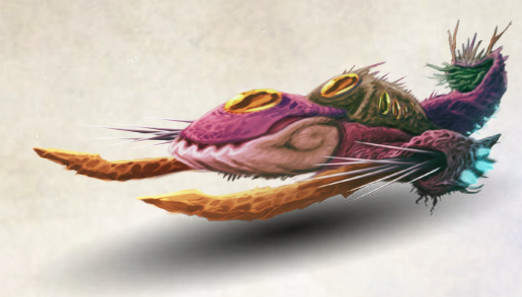 Medium aetherships are where we begin to get into the higher numbers of crew and out of the easy reach of PCs. These can function as small troop transports or mobile bases for small groups. Corvettes (left) are hybrid hulls straddling the line between capital and non-capital ships. They were widely produced by the Hierarchy before the development of the capital ship, and fell by the wayside as capital ships proved more cost-effective. Corvettes are hard to hit at high speed, making them effective blockade runners. Gunships (plant gunship pictured at right) are flexible combat-focused ships, capable of being refitted for multiple different roles. Akasaati gunships can keep firing as long as the aetherdrive is still functional, while erahthi gunships are massive artillery platforms, capable of inundating enemies in fire. Most Hierarchy gunships held the same crew throughout the war, earning unofficial call signs before most of them were decommissioned and sold to private collectors to recoup war losses. The erahthi, meanwhile, only developed gunships in the last five years of the war. Troop transports (not pictured) are your standard big, boxy ship with a big rear door. They can carry up to 48 troops and a single Large aethership like a speeder. Slow and cumbersome, they’ve gathered the reputation of being flying caskets. Civilian use has seen them retrofitted into mobile medical or laboratory facilities, or just hazardous cargo transport. Corporations also use them to mobilize security forces. Capital ships are enormous, existing only on space squares, acting mostly as scenery for smaller aetherships and characters. They consist of multiple sections, each with its own crew complement, HP, and module slots. Capital ship combat operates on a different time scale than normal, each capital ship acting once every ten rounds, allowing for smaller dogfights, boarding actions, and small-scale character actions to happen without being overwhelmed. 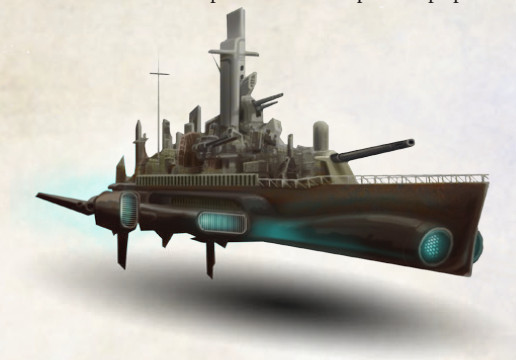 Destroyers and frigates were the first capital ships developed and were developed in rapid succession and usually deployed together, coordinating the frigate’s enhanced mobility and the destroyer’s accurate fire with devastating effect. Heavy capital ships started to edge them into obsolescence, but they are still produced in shipyards in limited numbers to this day.  Battleships and their little brother the battlecruiser are the smallest of the heavy capital ships. Battlecruisers are thought of by most pilots as the best balance between the maneuverability of the lighter hulls and the sheer firepower of the heavier. They also have great power efficiency, halving the daily running cost of the ship. Battleships, meanwhile, are tough, able to have engineers shift power between sections to reinforce one that looks to be taking a pounding in the near future.  Carriers (left) are purpose-built to house and deploy other aetherships. This plus their own heavy armament makes them ideal for seizing and holding control of a region. Meanwhile, the dreadnought (right) is an unstoppable behemoth. Literally, that’s what one of its abilities is called. In order to attack its center section where most of the aetherdrives will be kept, you need to have destroyed at least one of its other sections first. Over a thousand feet long and capable of carrying 3,000 people, it’s rather more like a flying city than something a PC could reasonably expect to own. A 20th-level character can afford a dreadnought, but not much else, and the cost of operating it at 1,210 au a day would rapidly bankrupt them afterward. Aethership modules are how you power, arm, defend, and vary an aethership’s base hull. Most of these will be mounted to external hardpoints, which can be attacked specifically at -5 to the attack roll. Legal restrictions do apply to some of these modules. The thing that makes a ship go is the aetherdrive, which provides power, motive force, and an aetheric field that provides gravity, dampens momentum, and protects against micrometeorite impacts. This field also reinforces the hull against other high-velocity projectiles. A space-capable aethership with its aetherdrive powered up applies its natural armor bonus against firearm touch attacks. Aetherdrives come in four strengths, and each aethership hull has a number of dedicated aetherdrive slots that must be filled by these varying strengths. For instance, a shuttle has two aetherdrive slots, so can use either two Aetherdrive Is, or a single Aetherdrive II. Additional aetherdrives can be installed in module slots to allow for a backup in case one gets shot. The rating of an aetherdrive also determines its effective Strength bonus for making Strength checks and its carrying capacity. An enterprising pilot can tune up his aetherdrive with engine modules to alter the performance. The Aetherdrive Booster is a set of self-charging aetherite injectors which can, once a day, double the fly speed of the aethership for 1d4+1 rounds. Cheap and effective, this can also be used to get yourself out of a dogfight because the pursuer needs to have enough flight speed to keep up with you. Multiple installations of this add more uses per day. An Aetherdrive Tuner swaps in aftermarket parts to increase the ship’s speed by ten feet per 50 feet of the ship’s normal speed. An Aetherdrive Stabilizer upgrades a ship’s maneuverability to the next category, and a Small Aetherdrive Filter grants the ship a +2 bonus to Reflex saves. There is no large filter. Speeders get some love, too. An Enhanced Speeder Thruster is a miniaturized version of an Aetherdrive Booster. Once a day, the speeder’s speed triples and it removes the limited flight capability for 1d3 rounds. And a Speeder Gravitic Stabilizer also removes the limited flight capacity of the speeder, although it only grants an operational ceiling of 30 feet. A pilot can fly higher, but he glides back into the 30-foot range on the next round. Both of these speeder enhancements are restricted. Miscellaneous Modules are… miscellaneous. The Astrogation Center fits gunships or larger and provides a number of navigational benefits: A +4 bonus on astrogation and tracking checks, reduction of the time it takes to astrogate based on the number of crew manning the module, and an additional pilot station, which can come in handy during boarding actions. A Carrier Bay allows a capital ship to carry up to four huge aetherships (Shuttles or fighters, basically) or the equivalent (Eight speeders or two gunships, etc.). An Engineering Bay is for gunships or larger and lets engineers repair the ship (with a +4 bonus) or shift power around from within it, as well as letting them grant the ship immunity to critical hits, the percentage based on how many engineers are working in the bay. A Farseeker Array is basically a sonar station. It emits audio pulses, displaying the locations of any objects or corporeal creatures within range. Functionally, it’s blindsense, but it needs someone actively manning and interpreting the readings. Its range is quadrupled underwater, but it doesn’t function in space. Kinetic Shield Generators fit any ship larger than a speeder, and are universally military-issue. They function like a modern shooter shield, granting temporary HP that regenerates, but takes longer to re-power if the shield is fully depleted. Comes in four strengths, from 15 hp to 200. A Shuttle Bay fits gunships and larger, and holds a Huge ship (shuttle) or two Large ones (speeders). I think, just based on offhand calculation based on available slots, that you can game the system a little by having a carrier bay holding two troop transports that each carry four shuttle bays. But that’s just me liking weird builds. The H.A.V. Turducken is probably not very viable. But I digress. Winding up the miscellaneous modules is the Sick Bay, which grants a +4 bonus to Heal checks and 40 charges worth of trauma kit which regenerate slowly. Hull Modules are armor plating. These all boost the hit points of the ship they’re installed on, and you need a larger ship to hold heavier armor. Weapon modules cover weapon mounts and the ship-specific weaponry that goes in them, although you can also mount a heavy personal weapon in one. Weapon mounts come in static and turret versions, static mounts being only capable of firing on targets in the arc they’re installed on (Fore, aft, port, or starboard). A turret mount that gets disabled becomes a static mount. Besides conventional firearms, an aethership weapon can fire fire, cold, electricity, or conventional ammo wrapped in telekinetic force, which damages incorporeal targets. Weapons are divided into four classes based on their size. Speeders can only mount Class I weapons, and interestingly a static mount for a speeder is military-issue, while a turret has no restriction. If you want to continue the unrestricted arming of your flying motorcycle, the only weapon you can put on is a heavy rifle (Or a heavy personal weapon, but those are all military or illegal). A gravitic or electrical weapon for a speeder is restricted, while fire and cryo blasters are military-issue. For larger ships, the conventional weapons in Class II are restricted, and everything else in that class and above requires military clearance. Battery weapons can be mounted on capital and sub-capital ships and allow gunners using them to make attacks of opportunity, while cannons fire explosive shells, damaging adjacent creatures. More interesting are the magic mount and turret, which allow a spellcaster to channel their spells through it and affect targets outside the ship. And that does it for aetherships. I like what they’ve done with it. I could’ve used a few examples of non-aethership aethercraft, but they theoretically had space constraints, despite the book turning out to be over twice as long as they intended. The slot and module system makes for a nicely customizable ship system, but I think the issue for most parties will be trying to get military clearance for their flying murderbox. There is a little bit of space-as-ocean thinking in here with no tactical consideration of flying above or below another ship, but I can handwave that with aetherdrives allowing ships to roll easily or excuse it with not wanting to make the system too complicated. But anyway, on to special materials. We get an economic note here that because gold is no longer used as currency, its commodity price is more or less identical to silver for its aesthetic and industrial qualities as well as the difficulty of locating and mining it.
The erahthi developed plant symbionts in the distant past, thanks to the teaching of Tritarch Erathlias. These symbionts bind to living hosts, granting special abilities. These abilities are varied and manifold, and specialized symbionts can be found for use in virtually any field. Athrakarus’ awakening during the Century War saw the beginning of the development of symbionts for war, causing a schism within the erahthi scientific community, but those dissenting voices who were not simply worn down by wartime pragmatism entered self-imposed exile or simply vanished. Human spies managed to steal the secrets of symbiont creation, which quickly found their way into private hands through black market channels. Today, symbiont nurseries can be found in every planetary system. With the declaration of peace, many erahthi are debating whether to continue the development of offensive symbionts, although the debate is mostly academic. More relevant discussion is to be had regarding the potential creation of intelligent symbionts, and whether the creation and possible enslavement of such creatures is right. Rumors exist that such symbionts have already been created, but no evidence exists. We get a briefing on the common physical structure of plant symbionts (It’s a plant), how they’re constructed (You grow them), and what sort of conditions one can expect in a symbiont nursery (It’s a greenhouse with some extra greebles). More interesting is the Machiavellian politicking going on among the various non-erahthi symbiont labs, who will often hire outside contractors to perform industrial espionage or poach talent from one another. Next come rules for creating our own plant symbionts, and players are encouraged to come up with their own symbionts. Some are provided in the bestiary, but far too few to cover all the situations that a symbiont might be useful for. In the broadest sense, any function served by a worn magic item might feasibly be handled by a symbiont. Well. Helms of Telepathy and Teleportation might be stretching it. But you can’t teleport in Aethera anyway. And that’s what we’ve got for the equipment half of the Equipment & Magic chapter. Next up: Music! Magic! Magic music!
|
|
|
|
I hadn't paid much attention to Aethera, but those are some pretty funky designs.
|
|
|
|
Our 103rd episode is live, and it's Gear Krieg, the hair-raising, Nazi-smashing, electrifying ... I can't do this guys, this game was super boring.
|
|
|
|
theironjef posted:Our 103rd episode is live, and it's Gear Krieg, the hair-raising, Nazi-smashing, electrifying ... I can't do this guys, this game was super boring. Yeah, I picked up a copy of Gear Krieg for beans way back when, because I really liked Heavy Gear, but good God it's tedious. It wasn't even worth F&Fing it because the book is almost entirely pointless historical and geographical detail, and the coolest part of the whole conceit -- World War 2 But With Giant Robots! -- is just buried under several hundred pages of cruft. It's a little similar to Cthulhutech in that regard, in that you can get a better game by taking the one-sentence high concept and running your own interpretation of it in almost any other system.
|
|
|
|
There's no high concept too good for self involved nerds not to ruin. I learned that from boring superhero system(JFK was an imposter) supplement about WW2.
|
|
|
|
Well, also, generating high concepts is the easy part anyway.
|
|
|
|
Entirely true, but the sheer amount of work some designers do just to pull the game away from fun into dull is astounding.
|
|
|
|
Hostile V posted:They're also getting a Kislev team which are basically just a reskinned Slann team, meaning that they're acrobatic and have a lot of leaping and maneuvering prowess. And a werebear. I disapprove. Should just be a regular bear that they've somehow convinced the referee to let them sign on.
|
|
|
|
theironjef posted:Our 103rd episode is live, and it's Gear Krieg, the hair-raising, Nazi-smashing, electrifying ... I can't do this guys, this game was super boring. Gear Krieg the miniatures game never took off too. It was pretty much DOA because producing mini's circa 2001 was so time and capital intensive that they could never deliver anything on the scale they needed to start a game. I imagine you still could play the miniatures game but you'd have to sub in mini's from Dust or some other WWII robot game. Also, now I'm imagining Paul Lynde's Scoutmaster from the Simpsons but a white guy in a kimono with eyeshadow as "the mandarin."
|
|
|
|
theironjef posted:Our 103rd episode is live, and it's Gear Krieg, the hair-raising, Nazi-smashing, electrifying ... I can't do this guys, this game was super boring. I'll have you know that my pause to listen to Land of Confusion was in the first 2 minutes of the pod. Also, I kept getting it confused with Ball of Confusion
|
|
|
|
I don't get mecha. I mean, I like mecha okay, and I'll play a mecha game. But "X but with Mecha!" is not enough for me. So, Dream Pod 9 was riding high for awhile, and I remember them having a very enthusiastic fanbase 10-15 years ago. They made a very interesting job of riding the fence between roleplaying and wargaming at a time when, outside the D20 bubble, it was trendy for games to have a very rich setting with metaplot and so on. And they made their wargamer customers happy, as far as I can tell, and wargaming is rules-intensive. But Silhouette never struck me as a "tried and true" well-playtested system. It strikes me as a unique, pool-based system with a 1-6 scale for traits, made in an era when it was trendy for companies to have an in-house system with these qualities. Perhaps it worked well enough in play--I never played with it, I just read it at a time when I still believed it was possible to find a perfect system for all your gaming needs. I remember one thing in particular--SilCore contains the suggestion that for Jovian Chronicles, where genetic superiority is a theme, you "flip" the way attributes and skills work so that you roll your attribute as a dice pool and add your skill as a flat bonus. However, this has the opposite of the intended effect. In Silhouette Core, it's easy to game the system. Using their resolution method, the difference between 3d6-keep-highest and 4d6-keep-highest is less than 1. So you're better off buying all the skills you want at 2d, and then buying up your attribute modifiers. RocknRollaAyatollah posted:Also, now I'm imagining Paul Lynde's Scoutmaster from the Simpsons but a white guy in a kimono with eyeshadow as "the mandarin."
|
|
|
|
gradenko_2000 posted:I'll have you know that my pause to listen to Land of Confusion was in the first 2 minutes of the pod. My hope is whoever is hosting that video saw the spike.
|
|
|
|
theironjef posted:My hope is whoever is hosting that video saw the spike. Genesis is vastly superior to Disturbed.
|
|
|
|
Halloween Jack posted:I don't get mecha. I mean, I like mecha okay, and I'll play a mecha game. But "X but with Mecha!" is not enough for me. I played in a long campaign of Tribe8 (which would be well worth an F&F if I had the books) and yeah, silhouette really doesn't work that well. For one thing, as your damage is a flat value multiplied by your roll's margin of success, it was far better to be an agility monkey hitting people with a huge MoS using your dagger than a big dude using a great sword to slightly graze your enemies on a hit.
|
|
|
|
Flavivirus posted:I played in a long campaign of Tribe8 (which would be well worth an F&F if I had the books) and yeah, silhouette really doesn't work that well. For one thing, as your damage is a flat value multiplied by your roll's margin of success, it was far better to be an agility monkey hitting people with a huge MoS using your dagger than a big dude using a great sword to slightly graze your enemies on a hit.
|
|
|
|
Flavivirus posted:it was far better to be an agility monkey hitting people with a huge MoS using your dagger than a big dude using a great sword to slightly graze your enemies on a hit. efb
|
|
|
|
Hey so Humble Bundle is doing WFRP. Is this all the good stuff that's been reviewed in the thread?
|
|
|
|
Halloween Jack posted:dexisthegodstat.txt
|
|
|
|
occamsnailfile posted:Hey so Humble Bundle is doing WFRP. Is this all the good stuff that's been reviewed in the thread?
|
|
|
|
Unsurprising, but I doubt they'll get many takers, given there's been a Russian site that just gives them all away as
|
|
|
|
It's been awhile, due to starting school again and going to work, but you know what time it is? It's ham time. Warhammer Fantasy: Realm of the Ice Queen Flotsam and Jetsam The Low City of Erengard is the poor district, because the low land near the riverfront isn't desirable. This isn't because of sewage or runoff (entirely) but because the Lynsk is a temperamental river prone to flooding during snowmelt. Similarly, tidal surges and unusual high tides (which happen more often than in our world because the second moon is a crazy warpstone satellite that goes where it wants when it wants instead of having a regular orbit) cause much more regular flooding. Better homes in this region are built on stilts or high ground, but more desirable ground tends to be the province of crime lords and gangs rather than the urban poor. The whole Low City was destroyed in the sack, but its people are used to packing up and fleeing at a moments' notice from the floods. Many of them got away or fled to other strongpoints to help defend the city, and with no place to go, most of the poor have returned to their homes to begin rebuilding. Joining them are Ungol tent cities from migrants attracted by Usol of Hag House, as Ungol migrants and refugees come to shore up the population and try to shift demographics in Erengrad. The Low City contains the city's Bretonnian quarter, where wet and miserable Bretonnian merchants from L'Anguille joke that the flooding reminds them of home. Without much investment from the nobles, the merchants have no clout and relatively little money to secure better land for their businesses. The local Brets have been down on their luck as long as anyone can remember, but they refuse to give up. They're mostly living in temporary shacks and tents while they struggle to rebuild their storefronts, homes, and businesses, but they just completed a large Grail Chapel in hopes that maybe the Lady will turn their luck around. As none of them are knights, she probably doesn't care. Most of the residents think the tall, reinforced building will be good shelter in a flood, though. The Low City also contains the most important business in all of Erengard outside of the harbor: This is where Erengard builds its guns and casts its cannons in a massive foundry. Erengard is one of only a few cities in all of the Old World that manufactures large field artillery, and more importantly they make them lighter and cheaper than Nuln (if not as high of quality or as powerful). This makes their cannon perfect for ships, and merchants running the Sea of Claws find that having a couple Erengard cannon gives Norse longships a few second thoughts about bothering them. The huge demand, steady pace of manufacture, and solid foundries make this one of the very few places a wealthy mercenary company or ship's crew could walk into the building, attend a showroom, put 1000 crowns on the table, and walk out with a field gun. This might be very interesting to particularly wealthy PCs who are trying to expand in the mercenary business, or who suspect they're going to need to blow away a Greater Demon soon. The Canonneer's Compound was badly damaged during the sack when the last guildmaster, Dazhda Kudrov, lured a large number of Chaos Warriors into the powder storage and then dropped a torch to take them with him. Demand has meant the guild has already rebuilt their foundry and returned to being one of the loudest, smelliest, and most important places in the city. An empty field where the Temple of Verena used to stand sits in the Low City, and the faithful haven't given up despite their church being burned to the ground. The Priesthood of Verena has never been popular in Erengard, with the amount of crime, smuggling, and corruption that goes on at every level of the city's politics. This has never dissuaded them, and they claim they're happy to be in the Low City where the people need justice the most. The high priestess, Bela Ekomov, is a devout follower of the Goddess and still insists that the most devout of her followers have a duty to follow the rule of law, working to help authorities arrest those who gouge others from the sack or who break the law. Most of the city considers him an inconvenience, since being arrested necessitates paying bribes to get released (one of the reasons the authorities are happy to arrest them), but while the Verenans occasionally get roughed up by gangs no-one considers them enough of a real threat to drive them out of the city. This may change; some of her followers are getting fed up with the way no-one ever stays in prison and have begun considering pronouncing the Goddess's justice themselves, resorting to her Sword instead of her Scales. This is a nice little bit of local conflict for PCs to get involved in. You've got a moral and theological dilemma with wider implications and a personality who is in straits that would certainly get her to turn to PCs for help if things are getting out of hand. The Grand Market is the heart of the city's life for anyone who does business outside of wholesaling and bulk goods. While it might be in the Low City, it's one of the major economic centers for all of Erengard, and one of the few places where people of all classes, races, and nationalities rub elbows. The Grand Market has the heaviest guard presence of any part of the city, being watched more carefully than a Boyar's palace or a Guild's headquarters, and protecting it is one of the few places the Guilds and Boyars get along perfectly. No violence or overt theft is tolerated, which means the local thieves have had to become expert swindlers and confidence tricksters. Where there are people and goods, there are also services, and you can find some of the best and loudest taverns and restaurants in the city inside the Grand Market. Almost anything is available here and the guards overlook any mundane contraband so long as the seller pays a 'tax' and has even the flimsiest of cover stories. You used to be able to find the odd evil grimoire or dark artifact here, but since the sack anyone trying to sell such things is going to get killed by the Chekists, the crime lords, the local merchants, the local guards, commoners, Boyars, and probably a couple angry dogs, all at the same time. Even the merchants and smugglers are completely in agreement with the rest of the city vis a vis gently caress Chaos. The Grand Market was rebuilt pretty much the instant the hordes left, because most of the stalls are temporary anyway (in case of flood) and someone had to sell to the refugees; there's money to be made! You can't let the ravening hordes of hell get in the way of business. Next: The High City
|
|
|
|
I've always gotten the sense that Bretonnia and Kislev just really don't get along. Surprised there's enough of them there to get a Grail Chapel built.
|
|
|
|
Mors Rattus posted:I've always gotten the sense that Bretonnia and Kislev just really don't get along. Surprised there's enough of them there to get a Grail Chapel built. I think it's less that they don't get along and more that both don't have much contact with one another. Most of what the Brets buy from Kislev they buy through intermediaries like the Empire and Marienburg. Similarly, while Bretonnia is a major breadbasket for all of the Old World, Kislev mostly feels that in Bretonnia exporting to the Empire and then Imperials closer to Kislev selling their own agricultural surplus to Kislev. You'll get the occasional Questing Knight or Knight Errant coming up to fight monsters and raiders, but those usually don't go further than the Empire. In contrast, there's no territorial friction with the Bretonnians and Erengard doesn't consider L'Anguille or Bordeleaux a major competitor. If there's anything that pisses the Kislevites off it's probably that the Bretonnian king in 2302 basically laughed at their requests for help in fighting Asuvar Kul. They probably remember his unwillingness to join in stopping the greatest thrashing their country ever got from a Chaos force, though they're probably happier with Louen's willingness to rally the knights and ride off to fight Archaon. Still, they just don't have very much contact or reason to deal with one another.
|
|
|
|
Halloween Jack posted:I don't get mecha. I mean, I like mecha okay, and I'll play a mecha game. But "X but with Mecha!" is not enough for me. On that note, and because I´ve got the memory of a very sad person, how does the one "Cthulhu BUT WITH MECHA!" game go financially? CthulhuTech? Is that still alive? Has it finally died? Are there still FishPeopleRapeCamps?
|
|
|
|
Last I heard it they were trying to get CTech 2.0 beta tested but how that went I haven't gotten the foggiest.
|
|
|
|
There's a 2nd edition in open beta right now. I have no idea how long the beta download has been out, but they canceled a planned sourcebook in 2015 because they were gearing up for the new edition.Strange Matter posted:Are there any mecha games where this isn't the case that aren't Fate-style make-em-ups? The whole "problem" with mecha is that because the players are pilots, the expectation is that they'll need good reflexes, so it makes sense for Dex to be important. The obvious way to go is to divide Dexinto a bunch of very specific skills or stats (Precision, Response, Anticipation or whatever) so that, while everyone obviously has excellent reflexes they're still specialized. Has any actual system done anything like that? Some systems, like Masterbook and Shadowrun 4th/5th edition, divide DEX into "gross motor coordination" and "fine motor coordination" stats. Others take some functions of DEX and hand them over to WIS. (Cthulhutech, to give you one mecha-related example, links ranged combat skills to Perception.) Still others, like Shadow of the Demon Lord, balance DEX by folding CON and STR into one stat. (One of the many things I like about Fragged Empire is that it does all three. It drags Dex as God Stat into the basement, beats it with a rubber hose until it confesses, and shoots it in the back of the head.) The problem with the first method, having many base ability scores, is that it tends to create a fiddly and fussy system with a number of knock-on effects. More work for the players at character creation, more and more narrowly defined skills, forgetting what stat to use for some obscure situation, and so on. This is often dealt with by having a group of derived stats that just flatten the actual values used in play. But that ultimately means that you've gone through a circuitous process and run your base stats through a formula to arrive at the same old values, usually in the name of realism.
|
|
|
|
slap me and kiss me posted:Genesis is vastly superior to Disturbed. True, but I think the video with the max Then smoke a j and watch a Gabriel-era Genesis concert as a pallet cleanser. Simian_Prime fucked around with this message at 22:19 on Sep 13, 2017 |
|
|
|
Cooked Auto posted:Last I heard it they were trying to get CTech 2.0 beta tested but how that went I haven't gotten the foggiest. AmiYumi fucked around with this message at 22:33 on Sep 13, 2017 |
|
|
|
Halloween Jack posted:There's a 2nd edition in open beta right now. I have no idea how long the beta download has been out, but they canceled a planned sourcebook in 2015 because they were gearing up for the new edition.
|
|
|
|
potatocubed posted:Yeah, I picked up a copy of Gear Krieg for beans way back when, because I really liked Heavy Gear, but good God it's tedious. It wasn't even worth F&Fing it because the book is almost entirely pointless historical and geographical detail, and the coolest part of the whole conceit -- World War 2 But With Giant Robots! -- is just buried under several hundred pages of cruft. Yeah, Dream Pod 9's main strength was taking Japanese anime series and reinterpreting them as semi-hard Western sci-fi settings with the kind of farcically detailed settings the 90s was really partial to. They were always just kind of doing slightly-more-true-to-the-source-material Battletech, and so their take was never quite that anime or pulpy. The anime influences were mainly just in the art, so when they did Gear Krieg it was so straightforward it just kind of hurt to watch. Without any of the dynamism of "inspiration" from an anime series there just wasn't much there.
|
|
|
|
AmiYumi posted:They just gave some kind of big presentation at a con, but all the details are filtering in from people who were there taking notes instead of any "official" word from the devs themselves. Which is...not encouraging, given their community outreach. AFAIR: the official forums are dead,
|
|
|
|
AmiYumi posted:They just gave some kind of big presentation at a con, but all the details are filtering in from people who were there taking notes instead of any "official" word from the devs themselves. Which is...not encouraging, given their community outreach. AFAIR: the official forums are dead, Are they still whining about piracy and how it's destroying their game? Back when they were working with Posthuman Studios it was like Goofus and Gallant.
|
|
|
|
I think they had some kind of booth at GenCon but I didn't look real close, because, you know... ... Wildfire.
|
|
|
|

|
| # ? Apr 18, 2024 23:10 |
|
FMguru posted:I always liked splitting DEX into two stats: dexterity and reflexes. DEX is for actively doing things (tightrope walking, lockpicking, aiming a gun), while REF is for passively doing things or responding (dodging in combat, surprise and initiative, jumping clear of a triggered trap). Spreads the burden around a little more, but that also leads towards the too-many-stats problems you note. Splitting Dex starts up all those arguments about when one type of Dex applies and when another does. I'd say... combine Str and Con, and then make Dex not the ruling stat for all combat skills. Toss a bunch of ranged combat over to perception(or wisdom or whatever the local equivalent is), and toss big, hulking two-handed weapons over to the Str/Con combined stat. Leave Dex for finesse weapons and defense.
|
|
|






















